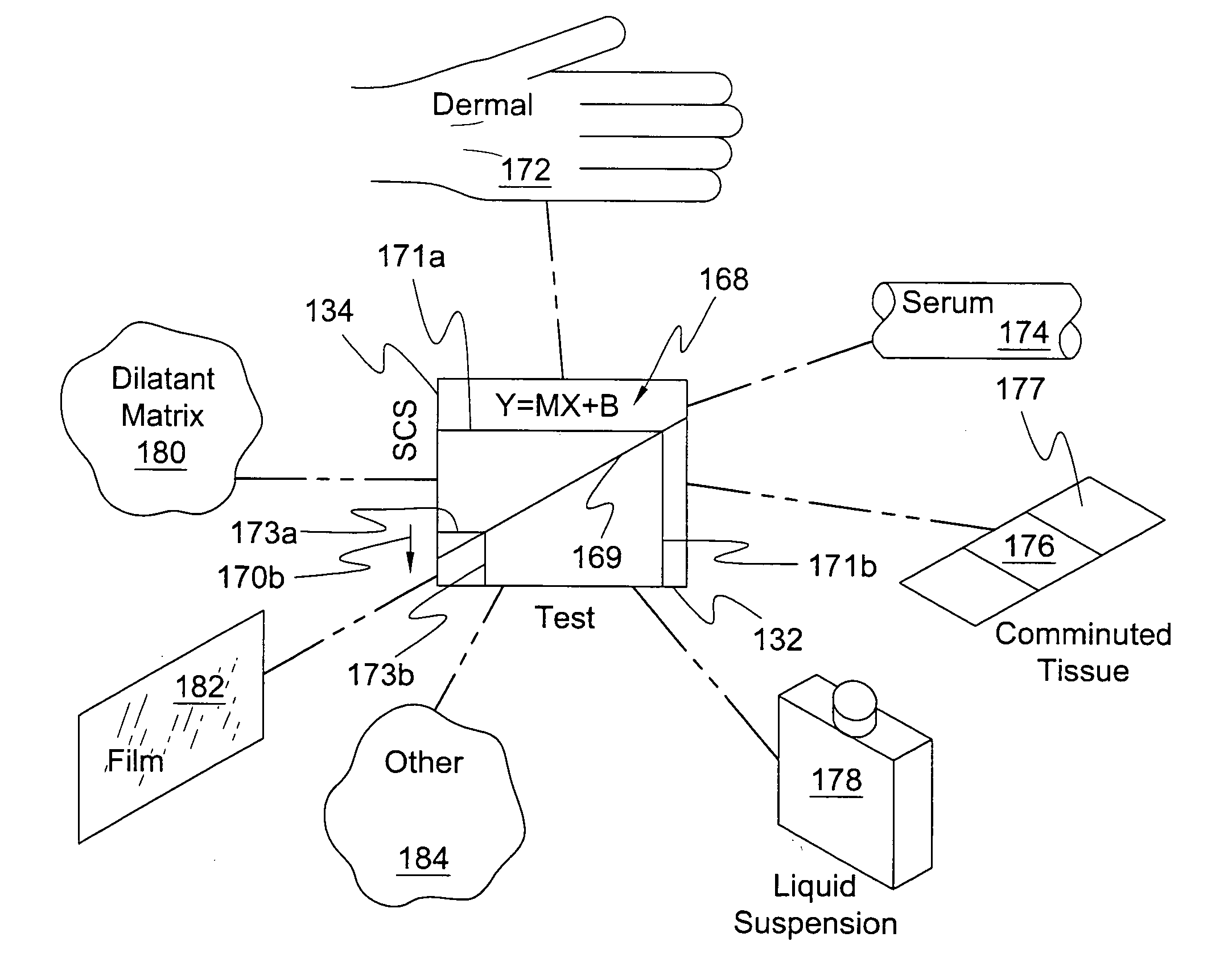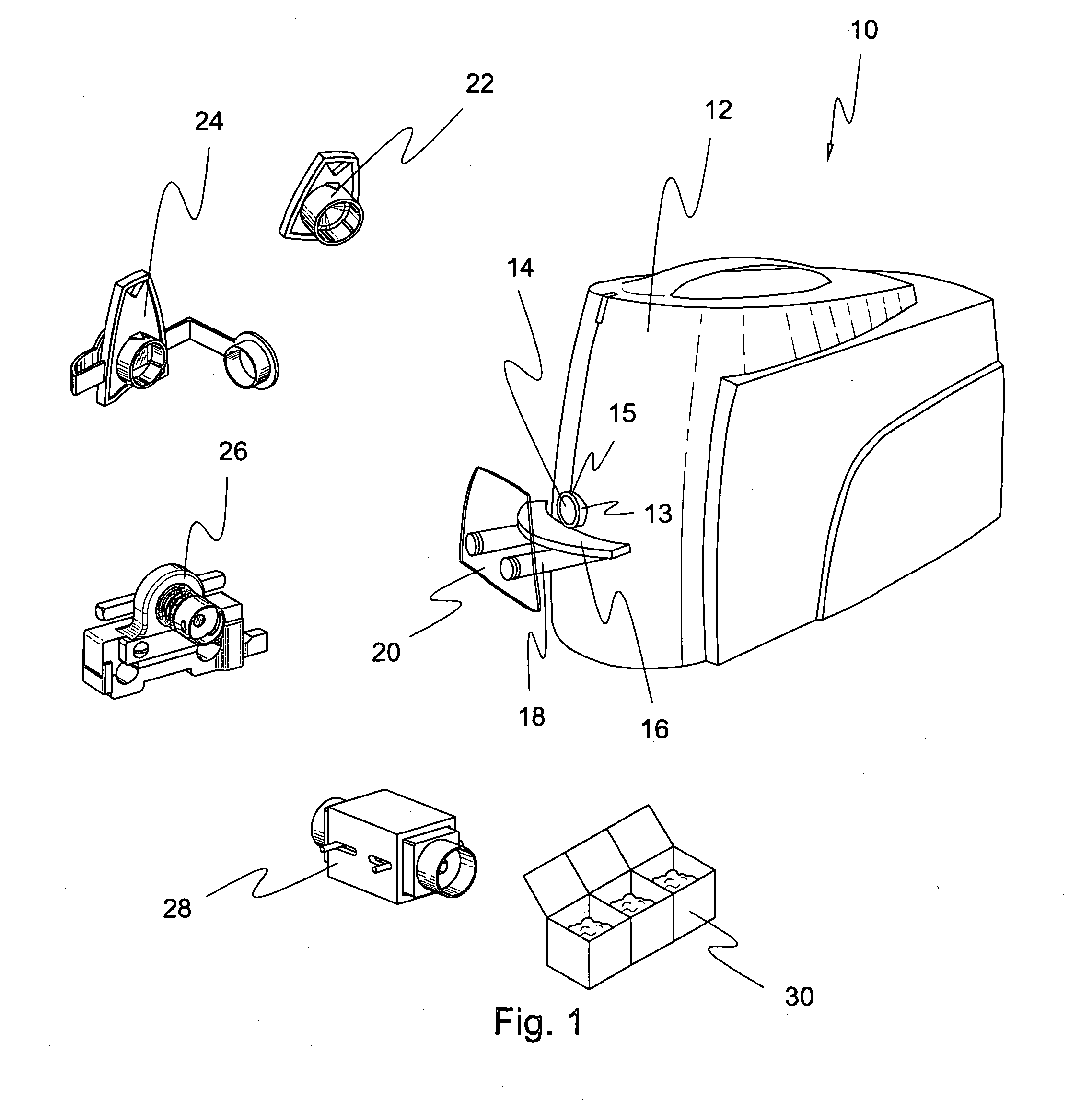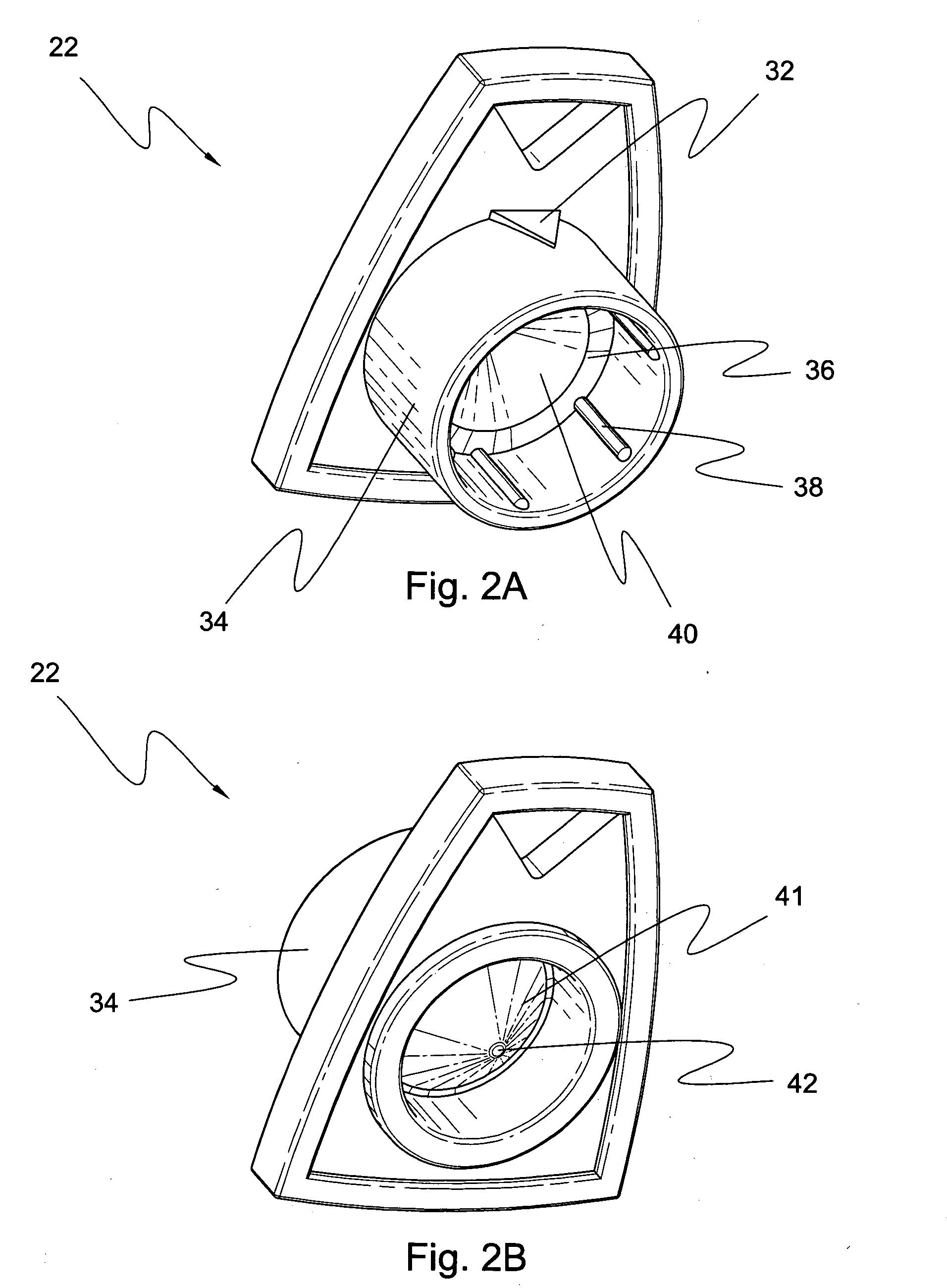Bio-photonic-scanning calibration method
a biophotonic scanning and calibration method technology, applied in the field of optical measurement of light intensity, can solve the problems of inherently problematic calibration samples taken from biological materials, inability to portability a sample, and inability to accurately measure the intensity of light, so as to achieve reliable radiant responses, improve signal-to-noise ratio, and improve the effect of raman respons
- Summary
- Abstract
- Description
- Claims
- Application Information
AI Technical Summary
Benefits of technology
Problems solved by technology
Method used
Image
Examples
Embodiment Construction
[0053] It will be readily understood that the components of the present invention, as generally described and illustrated in the Figures herein, could be arranged and designed in a wide variety of different configurations. Thus, the following more detailed description of the embodiments of the system and method of the present invention, as represented in FIGS. 1 through 19, is not intended to limit the scope of the invention, as claimed, but is merely representative of certain presently illustrated embodiments of the invention.
[0054] The various embodiments in accordance with the invention will be best understood by reference to the drawings, wherein like parts are designated by like numerals throughout.
[0055] Referring to FIG. 1, an apparatus 10 in accordance with the invention may include a scanning mechanism including a power supply, a light source, such as a laser light source, and a detector. The detector may receive signals including background fluorescence, elastically scat...
PUM
 Login to View More
Login to View More Abstract
Description
Claims
Application Information
 Login to View More
Login to View More - R&D
- Intellectual Property
- Life Sciences
- Materials
- Tech Scout
- Unparalleled Data Quality
- Higher Quality Content
- 60% Fewer Hallucinations
Browse by: Latest US Patents, China's latest patents, Technical Efficacy Thesaurus, Application Domain, Technology Topic, Popular Technical Reports.
© 2025 PatSnap. All rights reserved.Legal|Privacy policy|Modern Slavery Act Transparency Statement|Sitemap|About US| Contact US: help@patsnap.com



